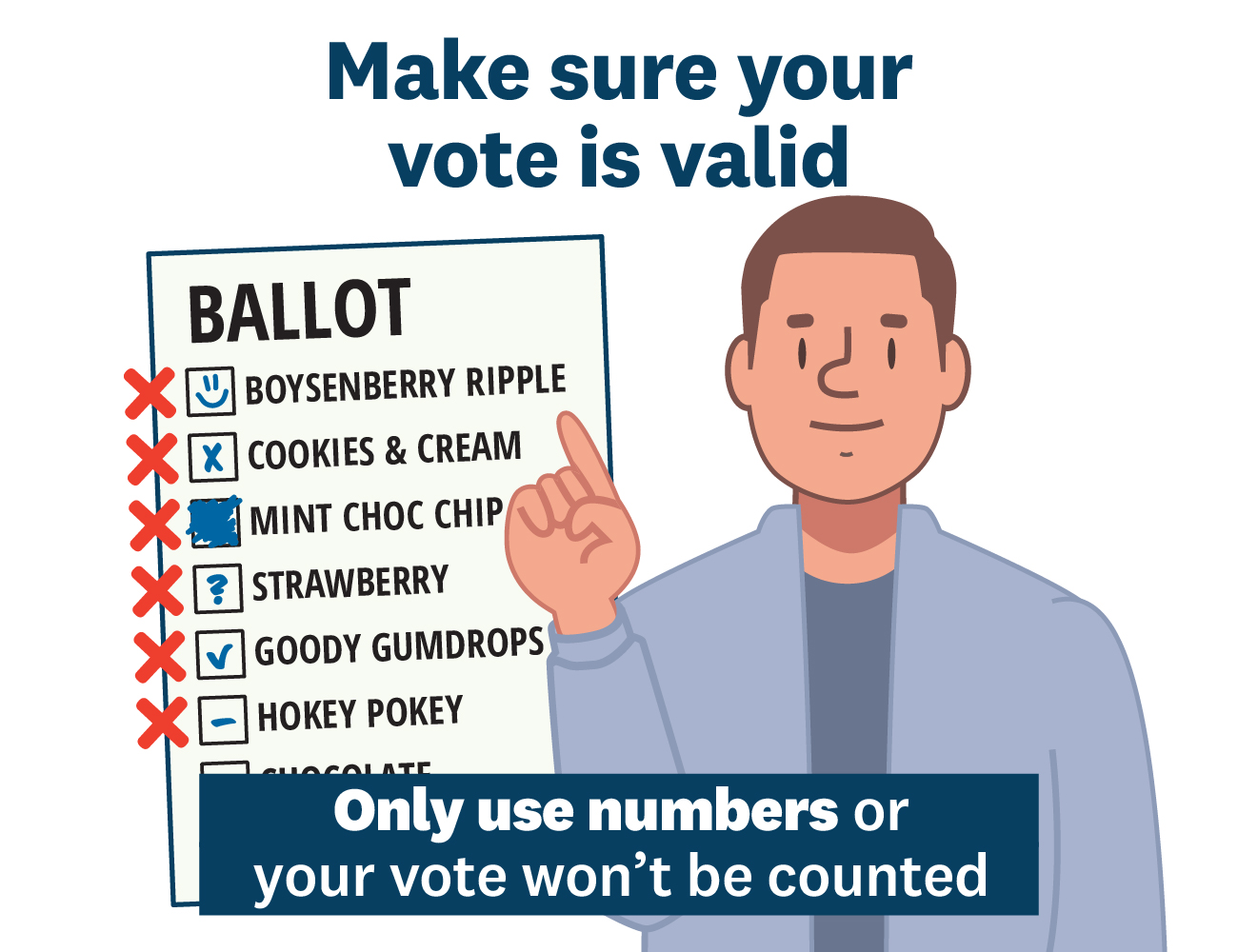-
-
-
How does Single Transferable Vote work?
-
-
-
-
-
-
-
-
-
-
-
-
The key thing in STV voting is:
You do not need to rank all candidates, just those you prefer most.
Remember:
- Only use numbers
- Start at 1, for your favourite
- Keep ranking from 2, 3 etc
- Leave blank the ones you don’t like
As you might have already heard (because we keep banging on about it), local government elections are being held in October and this year all of Otago will use STV to elect ORC councillors. Here are some handy tips to make sure your ballot isn’t bodged and a flow chart explaining how votes are counted under STV.
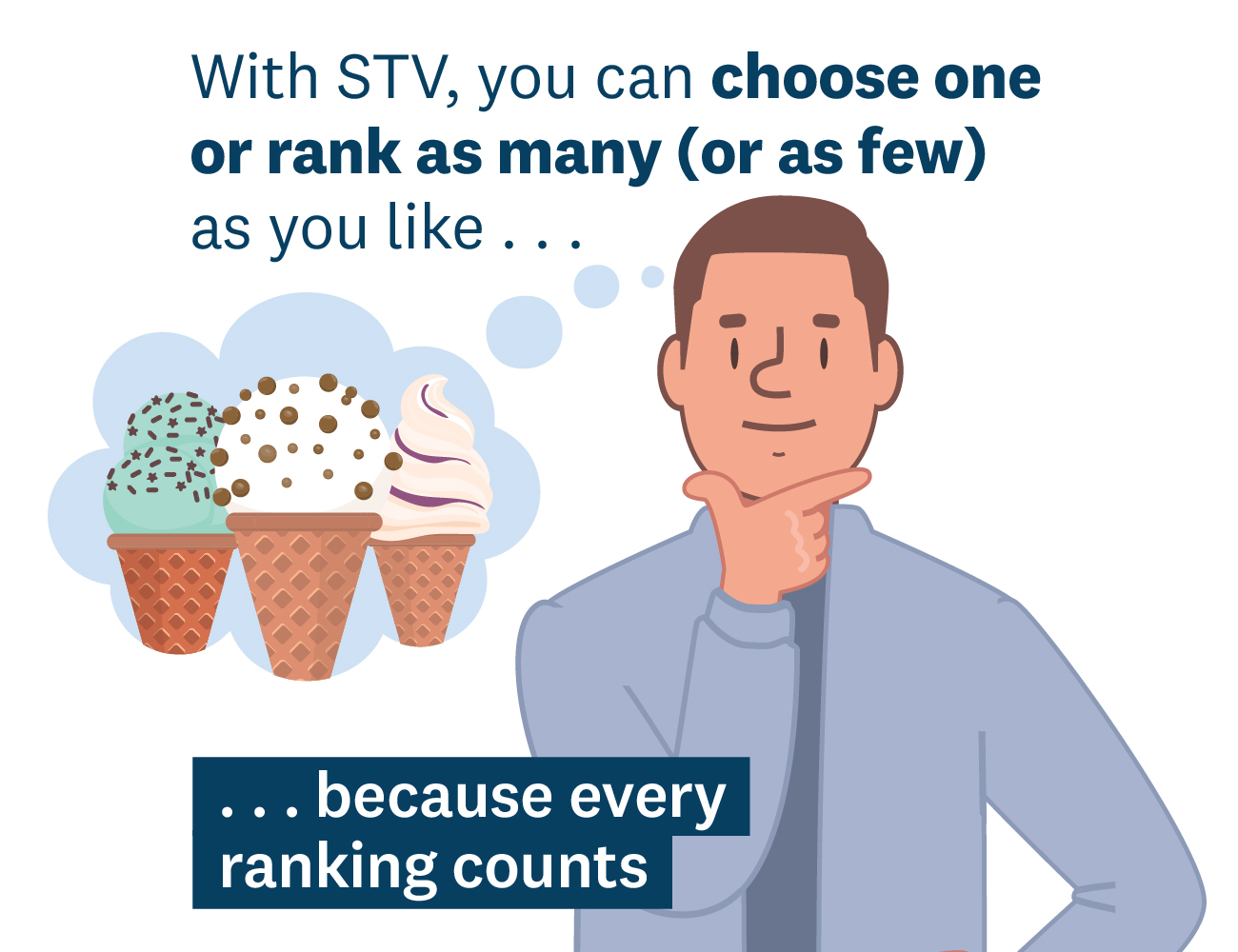
Voters rank candidates in order of preference. Under STV, you would write number “1” next to the name of your favourite candidate, number “2” next to your second favourite candidate and so on until you have ranked your preferences. You do not need to rank all candidates, just those you prefer most.
In an STV election, candidates must reach a certain number of votes to get elected. This is called a quota and is based on the total number of votes and the number of vacant positions.
You still only have one vote, but by ranking other candidates, your vote can be transferred. This will happen if your most preferred candidate is so popular that they don't need all their votes to meet the quota to be elected.
Make sure your vote is valid!
Tell your friends why cookies and cream is the best, and make sure your friends don't make an invalid vote.
Rank cookies and cream "1" in your ballot - if you want a second option, rank that one "2". If you really really don't want strawberry (because eeewww), then make sure their box is as empty as their flavour.
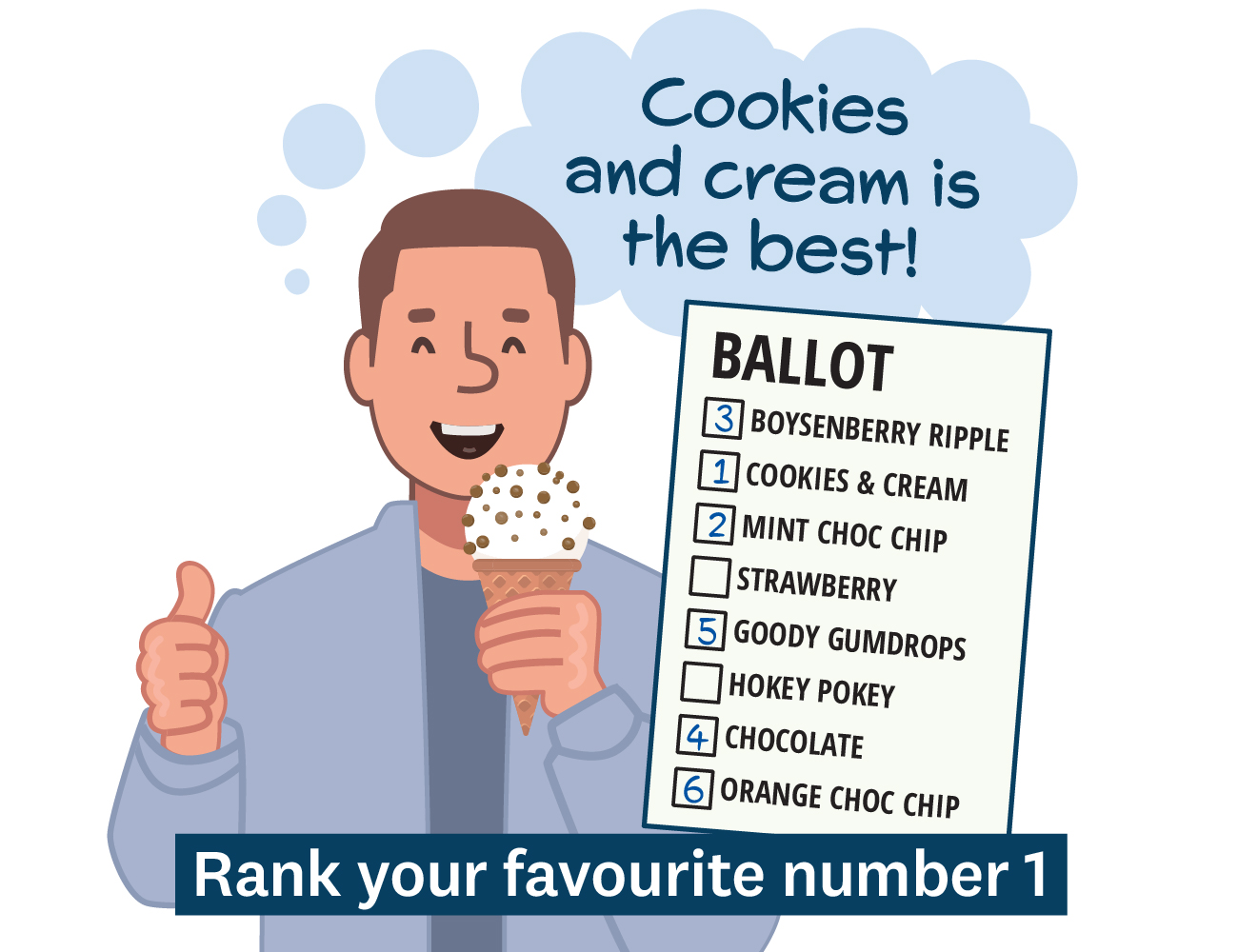
Don't rank them!
If you have someone that you really don't want to get in, don't put anything next to their name. If you put anything like an "x" or "never" you may invalidate your vote, and your number 1 person also won't get your vote.
If you rank them last, they may still get a vote.
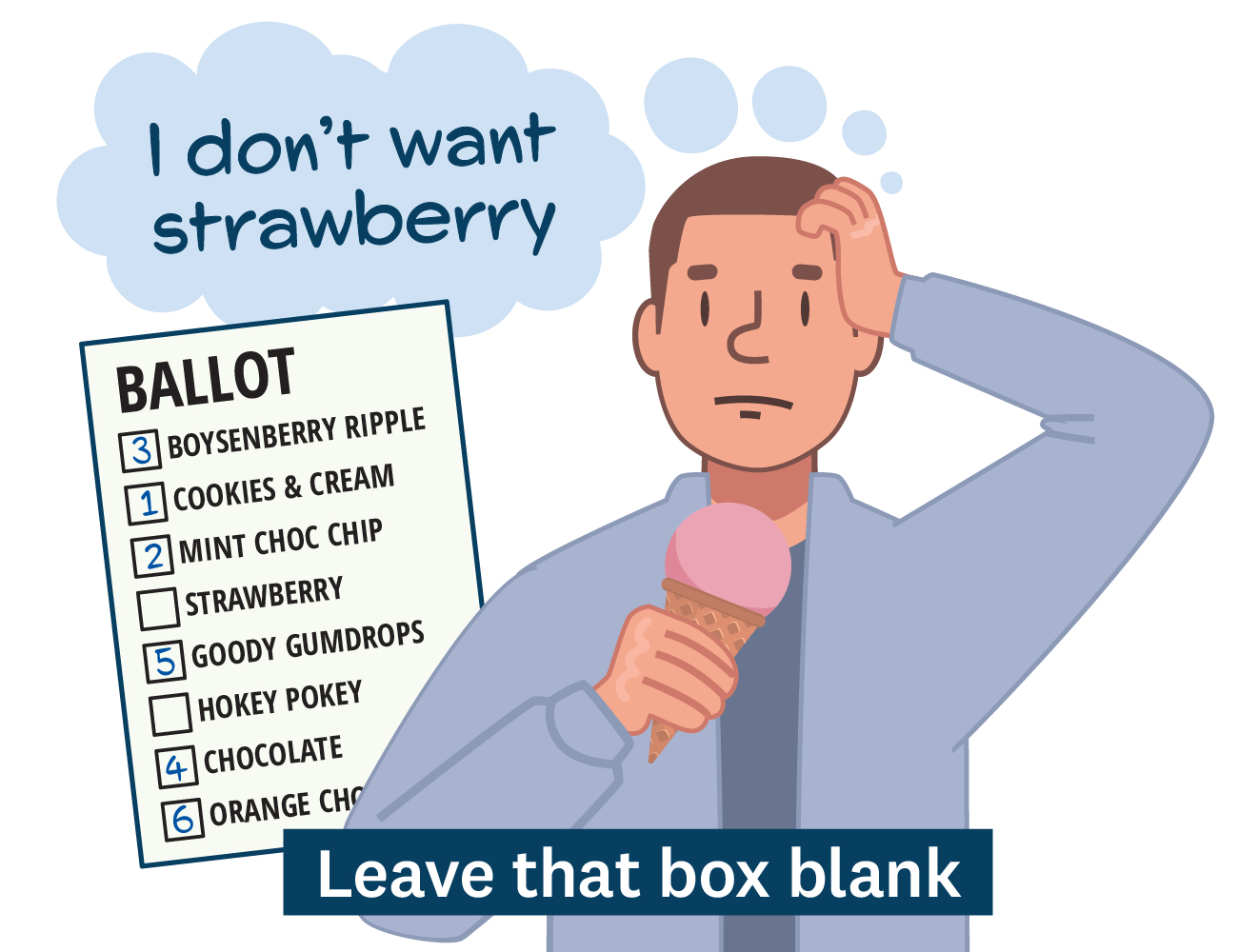
No. In New Zealand’s local elections that use STV:
-
Blank voting papers and informal votes are not counted when calculating the STV quota.
-
Only valid votes (i.e. papers where a 1st preference is clearly marked) are included in the quota calculation.
This means if you add anything extra to your voting paper it may not be counted at all.
By incorrectly marking your candidate preferences, you may make your preferences invalid. In the below examples writing "2" in twice means that officials can only be sure that your first preference is what you wanted, they have no way to know that Candidate C was who you really wanted as your third choice. Or if you have missed a number completely does this mean that you wanted Candidate B as your 3 preference?
Example 1: Not unique
A voting document that expresses these preferences—
| Candidate A | 1 | ||
| Candidate B | 2 | ||
| Candidate C | 3 | ||
| Candidate D | 2 | Not unique | |
| Candidate E | 4 |
generates the following preferences for the purposes of counting votes:
| First preference | Second preference | Third preference | Fourth preference | Fifth preference |
| A | None | None | None | None |
Example 2: Not consecutive
A voting document that expresses these preferences—
| Candidate A | 1 | ||
| Candidate B | 4 | Not consecutive | |
| Candidate C | 5 | ||
| Candidate D | 2 | ||
| Candidate E | 6 |
generates the following preferences for the purposes of counting votes:
| First preference | Second preference | Third preference | Fourth preference | Fifth preference |
| A | D | None | None | None |
https://legislation.govt.nz/regulation/public/2001/0145/latest/DLM57125.html
-
Your vote does not go to that candidate—ever.
-
If your higher-ranked choices are eliminated or elected, and you haven't ranked anyone else, your vote becomes “non-transferable” and stops being counted.
Example:
Let’s say you vote like this:
-
- Strawberry
- Chocolate
(You don't rank anyone else.)
-
If both Strawberry and Chocolate are eliminated or have surplus votes already counted, your vote doesn’t transfer to Cookies & Cream, Banana, or Vanilla — because you didn’t rank them.
-
Your ballot becomes inactive from that point onward.
Summary:
Not ranking a candidate = no chance your vote will help them.
The more candidates you rank, the more influence your vote has, especially if your top picks don’t make it.
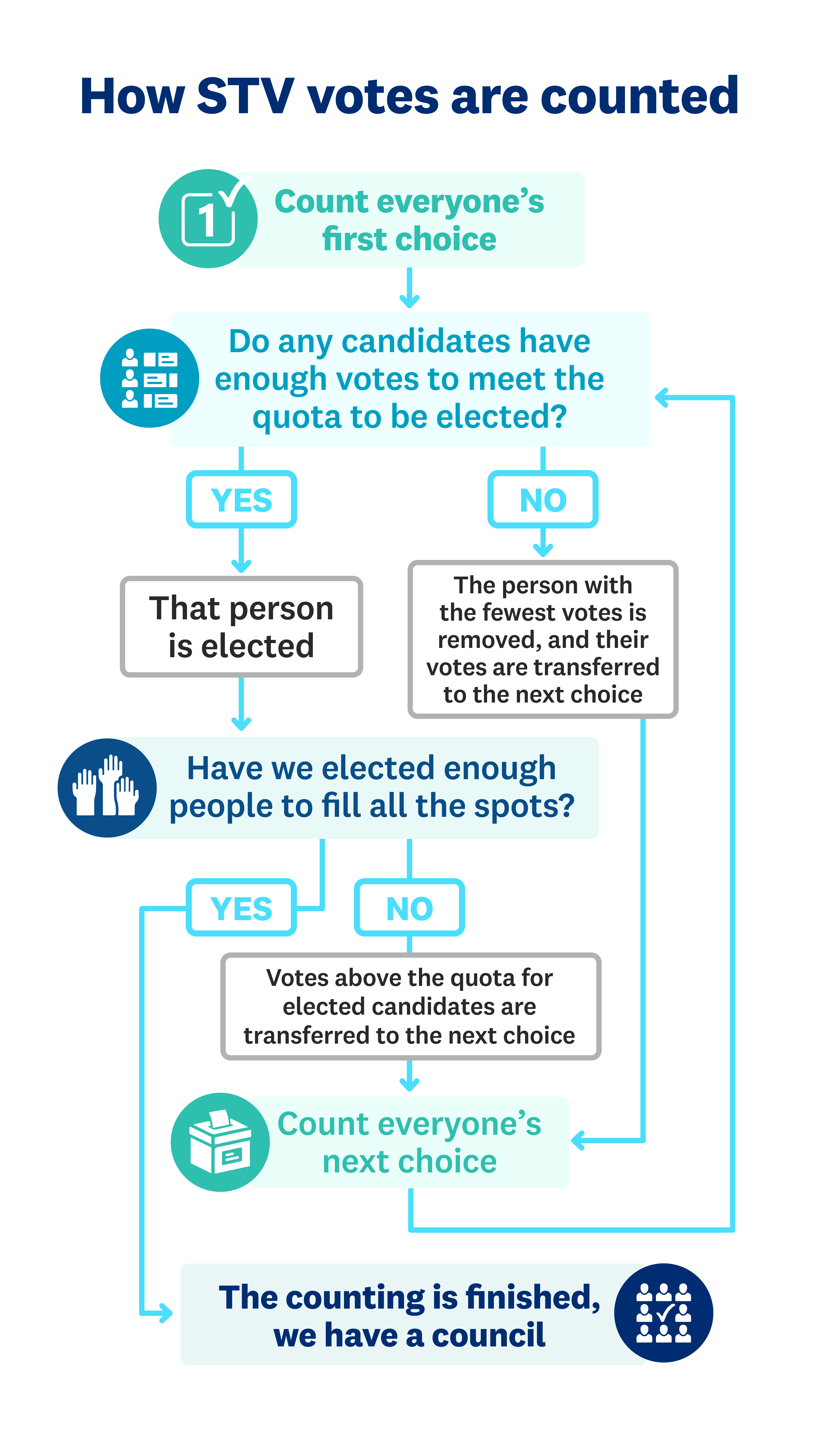
Blank voting document means a voting document (ballot paper) where there is no evidence that the voter has attempted to indicate their intention to vote for one or more candidates on the voting document with respect to that election.
- Completely empty form
The voter receives the ballot and returns it without writing anything at all.
Blank, because no mark, number, tick, or candidate selection was made. - Form with writing in other sections only
The voter fills out their address or contact details (if present), but leaves the voting section blank.
Blank, because no attempt to vote for any candidate. - Voting paper with only a doodle or drawing far from the voting area
A smiley face or line drawn in a margin, not near any candidate name or selection field.
Blank, if it clearly doesn't relate to any candidate or indicate intent. - Form returned crossed out in full
If the whole page is crossed out, or scribbled over in a way that does not clearly indicate a candidate.
May be classed as blank or informal, depending on interpretation — but likely blank if no intent is discernible.
Local Electoral Regulations 2001 (SR 2001/145) (as at 01 April 2025) – Interpretation
Local Electoral Regulations 2001
Schedule 48 (1) – Interpretation
Informal voting document means a voting document—
- that the electoral officer has reasonable cause to believe the document (ballot) was not issued to an elector by the electoral officer or other electoral official
Example:
Someone photocopies a ballot and submits it. Not valid because it wasn't officially issued. - on which the number of candidates for whom the voter has voted exceeds the number of candidates to be elected
Example:
In the STV system this means using the same number for multiple candidates, such as "Chocolate" and "Strawberry" both being ranked as "2". (The way the rule is applied in other voting systems is slightly different). - is not a blank voting document and does not clearly indicate the candidate or candidates for whom the voter desired to vote
Examples:
- Scribbles, ticks, or strange symbols with no clear ranking or pattern.
- Writing “none of the above” or crossing out all names.
- Using inconsistent numbering or repeating numbers in a way that makes it unclear.
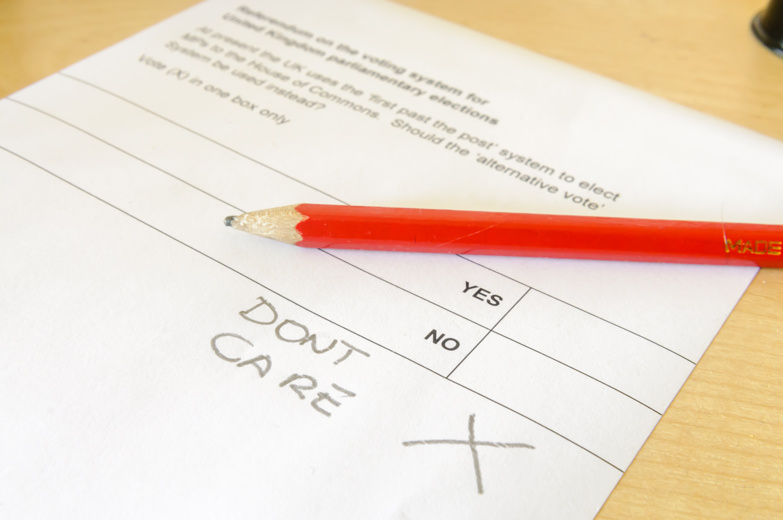
Local Electoral Regulations 2001
Schedule 48 (1) Interpretation

How a candidate is elected for more than one vacancy
A detailed explainer of how votes will be counted, the transfer system, and how we end up with our councillors from the NZ The Department of Internal Affairs.

Explaining STV
A simple explanation of STV from ODT's Grant Miller "Flowing water analogy helps explain STV" from 2022 - although in 2025 we don't use "50%" but a calculation based on the number of votes.

Local Body Elections
Information about how to stand, how to vote, and why it's important, all on our YouTube channel (you can also find recorded council meetings too)
| Date | Status | Details |
|---|---|---|
| 23 August 2023 | Council resolves to change electoral system from FPP to STV. | Council Meeting - 23 August |
| 19 September 2023 | Public notice requesting poll demands for changing to STV. | Public Notice of Right to Demand a Poll |
| 21 November 2023 | Workshop on Membership Representation Review process and considerations. | Representation Review Page |
| 6 December 2023 | Council paper to agree approach to the Representation Review. | Council Agenda – 6 December 2023 |
| 11 December 2023 | Deadline for electors to demand a poll; no petition received — STV proceeds. | |
| February 2024 | Early engagement via letters and online survey. | Engagement Survey Launched – Feb 2024 |
| 21 March 2024 | Workshop considering early feedback and options. | Representation Review Page |
| 22 May 2024 | Council paper to consider options for initial proposal. | Council Agenda – 22 May 2024 |
| 26 June 2024 | Council adopts initial proposal. | Council Agenda – 26 June 2024 |
| 10 July – 8 Sept 2024 | Community consultation on initial proposal. | 165 submissions received on representation review |
| 3 October 2024 | Council hearings and deliberations on submissions. | Council Agenda – 3 Oct 2024 |
| 23 October 2024 | Final proposal adopted. | Council Agenda – 23 Oct 2024 |
| 30 Oct – 3 Dec 2024 | Appeals period. Two Representation Review appeals received and referred to LGC. |
|
| 4 March 2025 | LGC hears Representation Review appeals from Dunedin and QLDC. | |
| 31 March 2025 | LGC decision confirms ORC representation proposal. | LGC Public Notice – 31 Mar 2025 |
| 9 April 2025 | Formally receive the determination from the Local Government Commission | Council Agenda - 9 April 2025 |
| May 2025 | Council confirms STV and constituency representation. | |
| 1 July 2025 | Official election notice: postal vote using STV; nominations open 4 July. | Notice Of 2025 Triennial Local Authority Elections |
